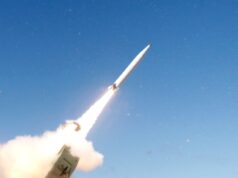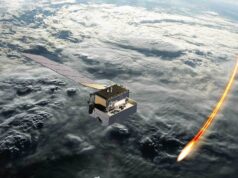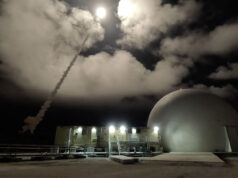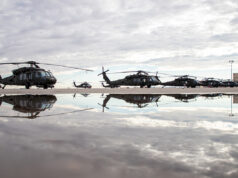Northrop Grumman Fire Scout instructors helped a detachment of Fire Scout Air Vehicle Operators from the US Navy’s Helicopter Sea Combat Squadron 23 train and rehearse for a historic two-part demonstration.
The AVOs trained for a real-time mission-set that handed off two autonomous, radar-equipped MQ-8B Fire Scout helicopters between multiple ground stations, a programme first. The exercise also provided critical, real-time targeting information to a manned MH-60S Seahawk helicopter during a weeklong exercise off the coast of southern California.
“One of the primary benefits of autonomous systems is that you do not have to use precious flight hours to train, rehearse or develop new tactics, techniques and procedures,” said Melissa Packwood, program manager, Fire Scout, Northrop Grumman Aerospace Systems.
In May 2017, the simulators helped the Navy plan out an entire mission ahead of the actual flights. The Fire Scout simulators at Northrop Grumman are generally used for proficiency training for pilots and payload operators, but the simulators also have the ability to rehearse and validate mission plans, increasing squadron readiness levels.
The demonstration called for the first-ever long-range transit of the aircraft. The autonomous helicopter was launched by AVOs using a mobile mission control station (MMCS) in Naval Auxiliary Landing Field San Clemente Island. The San-Clemente-based operators then successfully exchanged controls of the Fire Scout in-flight to AVOs operating from a ground control station at Naval Base Ventura County, Point Mugu, California. This hand-off exchange was then repeated during the return trip to San Clemente Island.
“Having the capability to hand-off control of the Fire Scout mid-flight significantly increases Fire Scout’s operational range and really shows what the system is capable of,” said Packwood. “Fire Scout truly becomes the force multiplier for the user by increasing operator time on-station and elevating the effectiveness of the fleet.”
The second part of the demonstration utilised the MQ-8B Fire Scout as a force multiplier during an integrated pre-deployment exercise and training with the amphibious assault ship USS America and it’s Amphibious Ready Group/Marine Expedition Unit. The radar equipped MQ-8B Fire Scout acted as laser designator platform for a MH-60S Seahawk helicopter that engaged with a moving surface contact using a Hellfire missile.
“A primary goal for this detachment was to showcase the capabilities of the MQ-8B,” said Lt. Cmdr. David Barnhill, officer-in-charge of the detachment. “San Clemente Island broadens the training opportunities for our Fire Scout team and gives us the ability to work with a multitude of assets not otherwise available.”
These successful demonstrations marked a first for the MQ-8B Fire Scout and showcased the overall enhanced battlespace awareness and early warning detection capabilities the system provides to the surface fleet.









